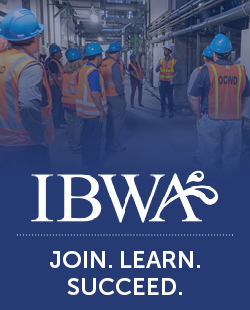Bottled Water Quality
Bottled Water Quality
Bottled water provides a consistently safe and reliable source of drinking water.
People choose bottled water because it is a safe, reliable, and convenient source of healthy hydration. Whether bottling spring water from protected underground aquifers or producing high-quality purified bottled water from a municipal source, America’s bottled water companies consistently meet consumer demand for safe, quality drinking water at home, at work, on the go, and when emergencies and natural disasters occur.
Unlike tap water, which is regulated by the U.S. Environmental Protection Agency (EPA), bottled water is comprehensively regulated by the Food and Drug Administration (FDA) as a packaged food product to provide a consistently safe and reliable source of drinking water. By law, FDA standards for bottled water must be at least as stringent and protective of public health as standards set by EPA for public water systems. Not only is bottled water regulated by FDA as stringently as EPA regulates tap water but also, in some cases, the FDA bottled water regulations are more stringent.
Consumers who choose to drink bottled water can rely on its consistent record of safety and quality. All bottled water products – whether from groundwater or public water sources – are produced utilizing a multi-barrier approach. This helps prevent possible harmful contamination to the finished product as well as to storage, production, and transportation equipment. Many of the steps in a multi-barrier system are effective in safeguarding bottled water from microbiological and other contamination. Measures in a multi-barrier approach may include one or more of the following: source protection, source monitoring, reverse osmosis, distillation, micro-filtration, carbon filtration, ozonation, and ultraviolet (UV) light.
Bottled Water: Proven Safety & Consistent Quality
A survey of FDA and state bottled water regulatory authorities, dated June 2009 and conducted by the Government Accountability Office (GAO), found there were zero outbreaks of foodborne illness from bottled water over a five-year period. (See United States Government Accountability Office Report on Bottled Water, GAO-09-610, June 2009.) Moreover, in testimony before a July 9, 2009 Congressional hearing, an FDA official stated that the agency was aware of no major outbreaks of illness or serious safety concerns associated with bottled water in the past decade. There has not been an update to this FDA report.
In contrast, as noted in the Drinking Water Research Foundation’s (DWRF) 2013 report, “Microbial Health Risks of Regulated Drinking Waters in the United States,” researchers estimate that more than 500 boil alerts for municipal water systems occurred in the United States in 2010.
Boil water notices that were issued between 2012 to 2014 were studied by researchers at the University of Arizona to track occurrence data, a project sponsored by the Water Quality Research Foundation (WQRF). The results of that study found, “Of the 20,978 notices from 50 states reporting, the majority (53.1 percent; 11,131) were presumed precautionary, due to a break or leak. The second largest category of boil water notices were caused by low pressure events (14 percent; 2,959). Microbial contamination resulted in 2,909 alerts or 13.9 percent of the total along with inorganic contamination initiating 69 (0.3 percent) of the alerts.(1)
In addition, the Centers for Disease Control and Prevention (CDC) reports that waterborne diseases, such as cryptosporidiosis and giardiasis, cost the U.S. healthcare system as much as $539 million a year in hospital expenses. In 2012, the CDC estimated, “Diseases (giardiasis, cryptosporidiosis, Legionnaires’ disease, otitis externa, and non-tuberculous mycobacterial infection) caused by primarily waterborne pathogens were associated with more than 40,000 hospitalizations, costing $970 million per year.”(2)
In 2006, EPA researchers reported an estimated 16.4 million cases of acute gastrointestinal illness per year are caused by tap water. Subsequent research has estimated that number of illnesses to be closer to 19.5 million cases per year.
During 2013–2014, a total of 42 drinking water–associated outbreaks were reported to CDC, resulting in at least 1,006 cases of illness, 124 hospitalizations, and 13 deaths. Legionella was responsible for 57 percent of outbreaks and 13 percent of illnesses, and chemicals/toxins and parasites together accounted for 29 percent of outbreaks and 79 percent of illnesses. Eight outbreaks caused by parasites resulted in 289 cases (29 percent), among which 279 (97 percent) were caused by cryptosporidium and 10 (3 percent) were caused by Giardia duodenalis.(3)
Testing
Bottled water facilities test multiple times per day and in conformance with their respective EPA and FDA regulatory requirements for minimum test frequencies.* Bottled water is tested for total coliform bacteria at least twice as often as tap water. In some cases, bottled water is tested up to 36 times more often than tap water on a gallon-for-gallon basis. [*FDA: 21 CFR 129.35(a)(3)(i) / USEPA: 40 CFR 141.21(a)(2)]
References
- Kelly A. (2016) “Boil Water Notices in the U.S. 2012-2014.” Zuckerman College of Public Health, University of Arizona. Tucson, AZ.
- Current Waterborne Disease Burden Data & Gaps | Healthy Water | CDC. (n.d.). Retrieved August 21, 2020, from https://www.cdc.gov/healthywater/burden/current-data.html.
- Benedict KM, Reses H, Vigar M, et al. Surveillance for Waterborne Disease Outbreaks Associated with Drinking Water — United States, 2013–2014. MMWR Morb Mortal Wkly Rep 2017;66:1216–1221. DOI: https://dx.doi.org/10.15585/mmwr.mm6644a3External.





